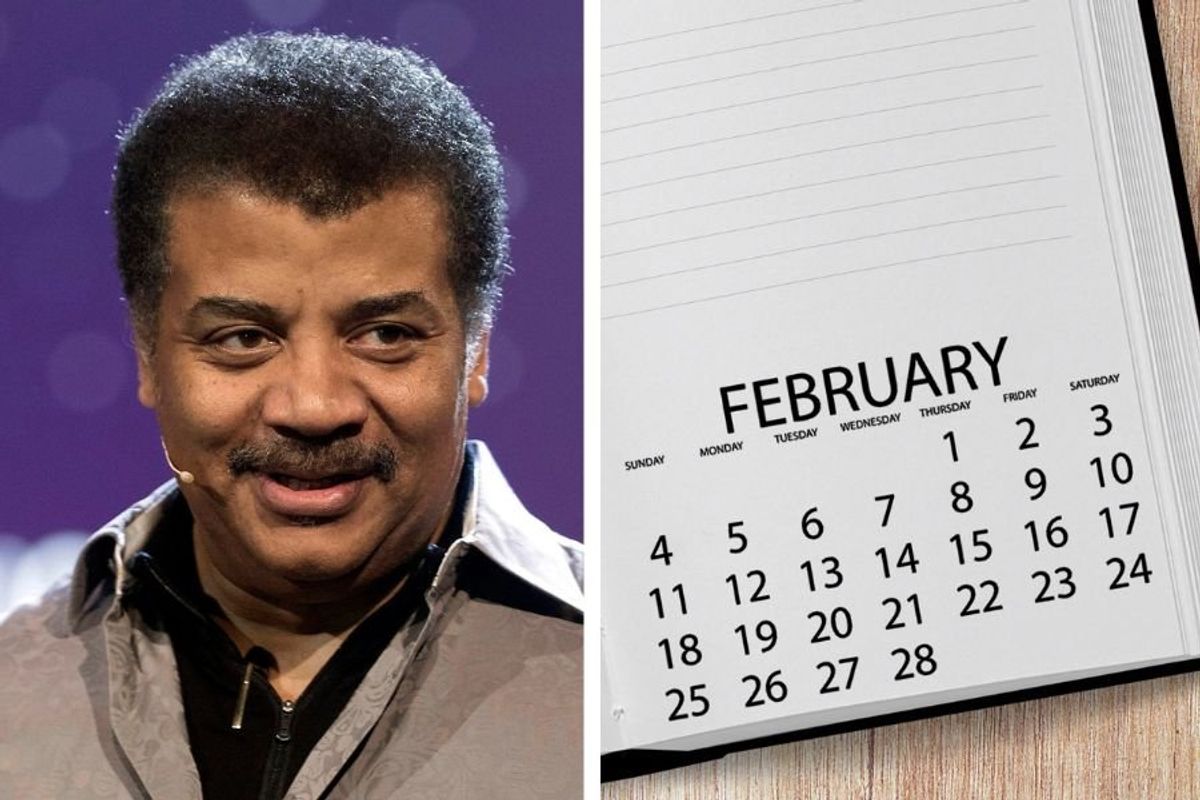
While Neil deGrasse Tyson might usually break down the more complex mysteries of our universe, he also has a knack for discussing the mundane in a way that makes it every bit as interesting.
On a recent episode of the StarTalk Podcast, where the popular astrophysicist chats about “everything under the sun; Or rather under the universe!” Tyson sat down with comedian Chuck Nice to break down how and why Leap Day came to be.
“People seem to be mystified by it. A day just shows up on the calendar,” Tyson told Nice.
But really, there’s nothing all that mystical about it. We know a year consists of 365 revolutions around the sun, aka a “year.” However, “there’s no law in the heavens that requires” a year to consist of exactly 365 revolutions.
In reality, a year is 365 revolutions…plus one-fourth. Or six hours.
Tyson then pondered, “so what are you gonna do with the six hours?” Which brought on a pretty intriguing concept: a rotating New Year’s celebration. Celebrating at the standard midnight one year, followed by a 6am celebration the following year, then midnight again, and so on.
“That’d be kinda dope,” Nice and Tyson agreed.
But regardless, we don’t do that. Instead, in ancient Rome, which used the Julian calendar, they “pocketed” the extra six hours and technically celebrated New Year’s early. When 24 hours accrued every 4 years, they’d give an extra day to the”month that needed it most,” i.e. February.
But here’s the thing: Ancient Romans didn’t know that it actually takes “a little less” than 365 for the Earth to go around the sun, Tyson explained. Therefore days that should have been “reckoned” were not, causing key moments of the calendar to keep shifting. The spring equinox, for instance, which was originally on March 21st, continuously moved up a day.
Neil deGrasse Explains Why We Have Leap Days
This became more of a glaring problem in the Late 16th century, when the religious holiday of Easter, which closely followed the spring equinox, had gotten dangerously close to Passover on the calendar.
So, Pope Gregory XIII had his team of scientists (aka the Jesuits) rectify the situation and account for the skipped days.
The result? October got 10 of its days swiped that year, and we got the Gregorian calendar commonly used today. Which, like the Julian calendar, adds a day to the calendar every 4 years, except when the year is divisible by 100 and not divisible by 400.
This is what makes the year 2000 so remarkable, Tyson told Nice. It was an incredibly rare “century year” that met the parameters needed to be a leap year. 1900, 1800, 1700 couldn’t claim that.
And perhaps this is the most amazing part of all: the Jesuits were able to figure all of this out “without a telescope,” Tyson said.
Leap Years might feel a bit wonky, arbitrary even. But really, it’s a nod to human ingenuity. The concept of time is such a complex, almost incomprehensible aspect of existence. It’s extraordinary that we have been able to even come up with a measuring system, albeit an imperfect one, in the first place.
